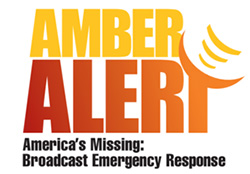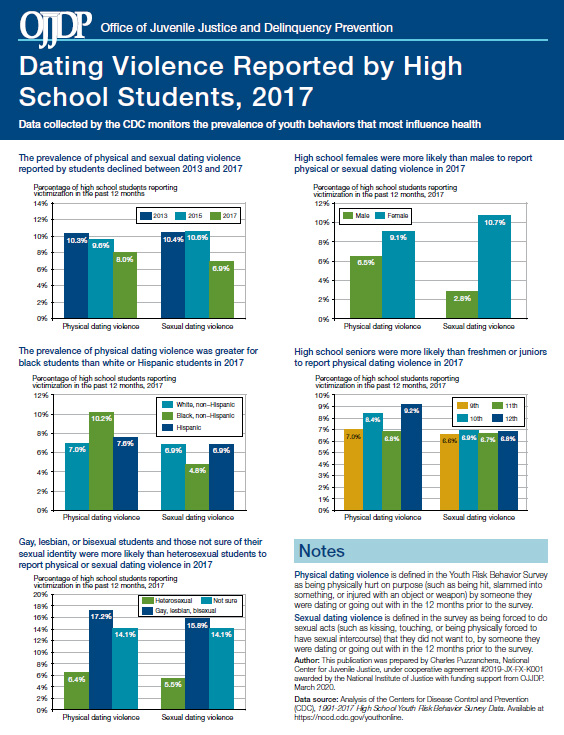 Shown above are (l.) Principal Deputy Assistant Attorney General Katharine T. Sullivan, the task force’s co-chair designee for Attorney General William Barr, and (r.) Assistant Secretary for Indian Affairs Tara Sweeney, co-chair designee for Secretary of the Interior David Bernhardt.
Shown above are (l.) Principal Deputy Assistant Attorney General Katharine T. Sullivan, the task force’s co-chair designee for Attorney General William Barr, and (r.) Assistant Secretary for Indian Affairs Tara Sweeney, co-chair designee for Secretary of the Interior David Bernhardt.
Photo courtesy of the Operation Lady Justice website.
Presidential Task Force Conducts Listening Sessions on Missing and Murdered American Indians and Alaska Natives
In late May and early June 2020, the President’s Task Force on Missing and Murdered American Indians and Alaska Natives conducted four listening sessions with tribal governments to address the high rates of missing and murdered people in Indian country—particularly missing and murdered women and girls.
The task force, designated Operation Lady Justice, is consulting with tribal leaders to develop and strengthen investigative protocols to resolve new and unsolved cases, improve information and data sharing, establish best practices for communicating with families throughout an investigation, and raise public awareness through outreach to affected communities.
“The American Indian and Alaska Native people . . . experience domestic violence, homicide, sexual assault, and abuse far more frequently than other groups,” said President Trump in his proclamation of May 5, 2020, as National Missing and Murdered American Indians and Alaska Natives Awareness Day. “These horrific acts, committed predominantly against women and girls, are egregious and unconscionable. [W]e reaffirm our commitment to ending the disturbing violence against these Americans and to honoring those whose lives have been shattered and lost.”
OJJDP To Hold Tribal Consultation
On June 25, 2020, OJJDP will hold a tribal consultation to discuss how the Office can most effectively collaborate with tribes to implement applicable provisions of the Juvenile Justice Reform Act (JJRA) of 2018. The JJRA reauthorized and substantially amended the Juvenile Justice and Delinquency Prevention Act.
The JJRA amendments created specific provisions related to tribes regarding funding transparency, tribal representation in state advisory groups, and Title II Formula Grants funding. The consultation will focus on how OJJDP can best support tribes in carrying out provisions that affect tribal youth. The Office also will seek to learn more about tribes’ evolving training and technical assistance needs as well as the barriers tribes encounter in accessing federal grants.
AMBER Alert Tools Launched To Help Tribal Law Enforcement Respond to Missing Children
 The AMBER Alert Training and Technical Assistance Program, in collaboration with the National Center for Missing & Exploited Children and the Bureau of Indian Affairs’ Office of Justice Services, has developed a set of investigative checklists to help tribal law enforcement respond effectively to cases of missing and abducted children. The checklists are available in web, PDF, and mobile (Android and Apple) formats.
The AMBER Alert Training and Technical Assistance Program, in collaboration with the National Center for Missing & Exploited Children and the Bureau of Indian Affairs’ Office of Justice Services, has developed a set of investigative checklists to help tribal law enforcement respond effectively to cases of missing and abducted children. The checklists are available in web, PDF, and mobile (Android and Apple) formats.
The Patrol First Responder Checklist provides information to promote an accurate and timely response by first-responding officers to reports of missing and abducted children. The actions taken during the initial response have a profound impact on the outcome of investigations.
The Investigative Officer Checklist presents important considerations for obtaining information and transitioning the incident from patrol first responders. The checklist includes specific techniques for handling nonfamily abductions, family abductions, and runaways.
The Supervisory Officer Checklist guides oversight and decisionmaking to promote adequate information collection and immediate mobilization of investigative resources.
Additional Video Recordings From OJJDP Training Conference Available
At OJJDP’s National Training Conference in September 2019, approximately 200 participants engaged in interactive discussions, panels, and workshops to enhance implementation of OJJDP’s Title II Formula Grants program and support compliance with the core requirements of the Juvenile Justice and Delinquency Prevention Act. The conference was organized by the Office’s State Relations and Assistance Division.
OJJDP has made available video recordings of conference sessions and interviews with participants on the Office’s State Relations and Assistance Division National Training Conference webpage. The following recordings were recently added to the webpage:
- Effective Monitoring Systems: An OJJDP Compliance Monitor explains the Juvenile Justice Reform Act mandate that states must have an “effective” system of monitoring compliance with the core requirements of the Juvenile Justice and Delinquency Prevention Act. States were previously required to have an “adequate” monitoring system.
- Juvenile Justice Resources: A representative from the Department of Health and Human Services’ Family and Youth Services Bureau highlights relevant resources for stakeholders.
- Partner Resources and Cross-System Collaboration: Officials from the Department of Education (DOE) discuss the objectives of The Prevention and Intervention Programs for Children and Youth Who Are Neglected, Delinquent or At Risk (Title I, Part D of the Every Student Succeeds Act); opportunities for collaboration between justice and education professionals; and the DOE resources.
- Tribal Youth Leadership: A representative from the OJJDP-supported United National Indian Tribal Youth, Inc. (UNITY) discusses the organization’s work to empower tribal youth.
- Engaging Tribal Entities: A representative from Oklahoma’s Office of Juvenile Affairs highlights the ways in which tribes can use Title II funding from OJJDP to improve outcomes for youth.
- Needs of U.S. Territories: The U.S. Virgin Islands’ state advisory group vice chair discusses the territory’s juvenile justice and delinquency needs.

Data Snapshot on Teen Dating Violence Released
A new Data Snapshot draws on data from the Centers for Disease Control and Prevention's Youth Risk Behavior Surveillance System to document the trends and characteristics of dating violence reported by high school students. Following are some highlights:
- The prevalence of physical and sexual dating violence reported by students declined between 2013 and 2017.
- The prevalence of physical dating violence was greater for black students than white or Hispanic students in 2017.
- Gay, lesbian, or bisexual students and those not sure of their sexual identity were more likely than heterosexual students to report physical or sexual dating violence in 2017.
Access the full list of Data Snapshots on OJJDP’s Statistical Briefing Book website.
Two Practices Rated “Effective” by CrimeSolutions.gov
 CrimeSolutions.gov—a National Institute of Justice resource that informs practitioners and policymakers about what works, what doesn't, and what's promising—has rated Brief Alcohol Interventions for Adolescents and Young Adults as “effective” in reducing alcohol consumption and alcohol-related problem outcomes for adolescents and young adults. These interventions motivate and provide resources to help participants moderate their drinking through a short-term intervention (one to five sessions) and seek more intensive treatment in the long term, if needed. They include at least one of the following components: a discussion of alcohol consumption, feedback on risk or levels of alcohol use, comparisons with local or national norms, information on potential harms, coping strategies, and goal-setting plans for dealing with drinking situations.
CrimeSolutions.gov—a National Institute of Justice resource that informs practitioners and policymakers about what works, what doesn't, and what's promising—has rated Brief Alcohol Interventions for Adolescents and Young Adults as “effective” in reducing alcohol consumption and alcohol-related problem outcomes for adolescents and young adults. These interventions motivate and provide resources to help participants moderate their drinking through a short-term intervention (one to five sessions) and seek more intensive treatment in the long term, if needed. They include at least one of the following components: a discussion of alcohol consumption, feedback on risk or levels of alcohol use, comparisons with local or national norms, information on potential harms, coping strategies, and goal-setting plans for dealing with drinking situations.
In addition, CrimeSolutions.gov has rated Expressive Writing Interventions for Adolescents as “effective” for improving adolescents’ problem behaviors, internalizing behaviors, and school participation. The practice is rated “no effects” for school performance. This brief psychosocial intervention, also known as “written emotional disclosure,” is designed to improve emotional expression and processing during adaptation to stressful situations. The goal is to improve psychological and physical health.
Report Published on Tip Lines Used To Identify School Safety Threats
A report funded by the National Institute of Justice presents the methodology and findings of a survey on tip lines for school safety. Tip lines are structured systems that enable students, parents, school staff, or community members to report information on perceived potential threats to school safety.
The survey, which involved a nationally representative sample of 1,226 school principals, determined the prevalence of tip lines for school safety, the types of schools that are more likely to use tip lines, how tip lines are designed and implemented, the challenges of operating tip lines, and their perceived effectiveness.
The survey found that 51 percent of public middle and high schools currently have a tip line. More than half of tip lines are staffed or monitored 24 hours a day, 7 days a week; a staff member receives calls, texts, or other entries in real time. Most calls are anonymous. Principals perceive tip lines to be an effective school safety strategy; 50 percent report that tip lines have prevented violent incidents, and two-thirds believed tip lines enabled their schools to respond more effectively to bullying. Seventy-three percent of respondents reported that tip lines had prevented incidents of self-harm or suicide.
